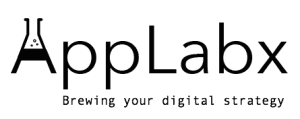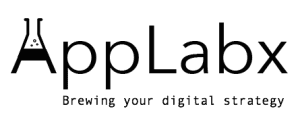Key Takeaways
- E-E-A-T (Experience, Expertise, Authoritativeness, Trustworthiness) is essential for building credible, high-quality content that ranks well on Google.
- Google uses E-E-A-T to assess website reliability, influencing search rankings through quality signals and user trust.
- Implementing E-E-A-T requires transparent author credentials, strong backlinks, secure websites, and regularly updated, expert content.
In the constantly evolving landscape of search engine optimization (SEO), staying ahead requires more than just mastering keywords and backlinks. Google’s algorithms have grown increasingly sophisticated, focusing not only on technical factors but also on the quality, reliability, and credibility of the content presented to users. Among the many ranking signals that influence how websites perform in search results, one concept has gained significant prominence in recent years—E-E-A-T.

E-E-A-T stands for Experience, Expertise, Authoritativeness, and Trustworthiness. It represents a set of criteria that Google uses to evaluate the overall quality and credibility of a website or content creator. Originally introduced as E-A-T (Expertise, Authoritativeness, Trustworthiness) in Google’s Search Quality Evaluator Guidelines, the addition of Experience reflects the growing emphasis on real-world, first-hand knowledge as a critical component in content evaluation. Understanding E-E-A-T is now essential for SEO professionals, content creators, and website owners who aim to enhance their visibility and credibility in search engine results pages (SERPs).
This concept is not just a passing trend but a fundamental pillar of Google’s ongoing mission to provide users with reliable, accurate, and valuable information. The E-E-A-T framework helps search engines distinguish between high-quality content and misleading or low-value pages, particularly in sensitive sectors such as health, finance, and legal advice—often referred to as Your Money or Your Life (YMYL) topics. Websites that demonstrate strong E-E-A-T signals are more likely to achieve higher rankings, greater user trust, and improved engagement metrics.
Despite its importance, E-E-A-T remains a complex and sometimes misunderstood aspect of SEO. It is not a direct ranking factor like keywords or backlinks but rather a qualitative guideline that influences how Google’s algorithms and human evaluators assess content quality. For businesses and marketers, effectively applying E-E-A-T principles requires a strategic approach that combines high-quality content creation, transparent author information, credible sources, and a trustworthy website environment.
In this comprehensive guide, we will delve deep into what E-E-A-T entails, why it matters for SEO, how Google measures these factors, and practical strategies to incorporate E-E-A-T into your SEO efforts. By gaining a clear understanding of E-E-A-T, you can better position your website to meet Google’s quality standards, enhance user trust, and ultimately improve your search rankings in an increasingly competitive digital ecosystem.
But, before we venture further, we like to share who we are and what we do.
About AppLabx
From developing a solid marketing plan to creating compelling content, optimizing for search engines, leveraging social media, and utilizing paid advertising, AppLabx offers a comprehensive suite of digital marketing services designed to drive growth and profitability for your business.
AppLabx is well known for helping companies and startups use SEO to drive web traffic to their websites and web apps.
At AppLabx, we understand that no two businesses are alike. That’s why we take a personalized approach to every project, working closely with our clients to understand their unique needs and goals, and developing customized strategies to help them achieve success.
If you need a digital consultation, then send in an inquiry here.
What is E-E-A-T and How Does It Work for SEO
- What is E-E-A-T?
- Why E-E-A-T Matters for SEO
- How Google Measures E-E-A-T
- Implementing E-E-A-T in SEO Strategy
- Common Mistakes and Misconceptions About E-E-A-T
- Tools and Resources to Evaluate and Improve E-E-A-T
1. What is E-E-A-T?
E-E-A-T is an acronym used by Google to evaluate the quality and reliability of content on the web. It stands for Experience, Expertise, Authoritativeness, and Trustworthiness. This framework guides how Google assesses webpages, especially for content that can impact a user’s well-being, finances, or safety. Understanding E-E-A-T is crucial for creating content that meets Google’s quality standards and ranks well.
1. Understanding Each Component of E-E-A-T
- Experience (New addition to E-A-T)
- Focuses on the author’s or content creator’s real-life, first-hand experience with the topic.
- Highlights practical knowledge beyond theoretical understanding.
- Example: A travel blog post written by someone who has actually visited the location offers higher experience value than a generic summary.
- Expertise
- Refers to the depth of knowledge and skill possessed by the content creator.
- Often associated with formal qualifications, certifications, or professional background.
- Example: Medical articles written by licensed doctors or health professionals demonstrate high expertise.
- Authoritativeness
- Measures the reputation of the content creator, website, or organization within the industry or niche.
- Builds through recognition, citations, mentions by other authoritative sources.
- Example: A financial advice site frequently referenced by well-known news outlets or financial institutions shows strong authoritativeness.
- Trustworthiness
- Reflects the reliability and credibility of the website and its content.
- Includes site security, transparency, user reviews, and accuracy of information.
- Example: An ecommerce website with clear privacy policies, secure payment gateways, and positive customer reviews signals trustworthiness.
2. Why Each Component Matters
| Component | What It Ensures | SEO Impact | Example Use Case |
|---|---|---|---|
| Experience | Real-world knowledge and authenticity | Enhances content relevance and user satisfaction | A chef sharing original recipes based on their experience |
| Expertise | Accurate, knowledgeable content | Improves content authority and reduces misinformation | A lawyer providing legal advice on a professional blog |
| Authoritativeness | Recognized reputation and industry respect | Strengthens site credibility and link-building potential | A tech site cited by major industry publications |
| Trustworthiness | Reliable, transparent, and secure interactions | Builds user confidence and lowers bounce rates | An online pharmacy with verified licenses and user testimonials |
3. The Evolution from E-A-T to E-E-A-T
- Initially, Google’s guidelines emphasized Expertise, Authoritativeness, and Trustworthiness (E-A-T) mainly for content quality evaluation.
- In 2022, Google added Experience to emphasize the value of real-life, first-hand knowledge in content creation.
- This shift reflects Google’s recognition that authentic experience can be as critical as formal credentials in some niches.
- Example: A personal finance blog from someone who has personally overcome debt may provide more relatable and practical advice than a purely academic article.
4. How E-E-A-T Applies Across Different Content Types
| Content Type | Importance of Each E-E-A-T Component | Example |
|---|---|---|
| Medical/Health (YMYL) | High Expertise, Authoritativeness, and Trustworthiness mandatory | Articles reviewed or written by medical professionals |
| News and Journalism | Strong Trustworthiness and Authoritativeness essential | News sites with fact-checking and editorial oversight |
| Product Reviews | Emphasis on Experience and Trustworthiness | Reviews by verified purchasers with detailed feedback |
| Personal Blogs | Experience and Authenticity prioritized, with moderate Expertise | Travel blogs by genuine travelers sharing firsthand stories |
| Financial Advice | Highest standards of Expertise, Authoritativeness, and Trustworthiness | Financial planners or certified advisors contributing content |
5. Practical Example: E-E-A-T in Action on a Health Website
- Experience: Health blog posts include testimonials or first-hand patient stories.
- Expertise: Articles authored by licensed doctors or certified nutritionists.
- Authoritativeness: The site is linked and referenced by reputable health organizations.
- Trustworthiness: Clear disclaimers, privacy policies, secure site protocols (HTTPS), and updated content.
This multi-layered approach increases Google’s confidence in the site, leading to higher rankings and better user trust.
6. Summary Matrix of E-E-A-T Components and SEO Signals
| SEO Signal | Experience | Expertise | Authoritativeness | Trustworthiness |
|---|---|---|---|---|
| Author Bio & Credentials | Partial | Strong | Medium | Medium |
| First-Person Content | Strong | Medium | Low | Medium |
| Backlinks from Reputable Sites | Low | Medium | Strong | Medium |
| User Reviews & Testimonials | Medium | Low | Medium | Strong |
| Site Security & Policies | Low | Low | Low | Strong |
| Content Depth & Accuracy | Medium | Strong | Medium | Strong |
This detailed breakdown clarifies that E-E-A-T is a multifaceted evaluation standard that requires balanced attention to all four components to maximize SEO performance.
2. Why E-E-A-T Matters for SEO
E-E-A-T—Experience, Expertise, Authoritativeness, and Trustworthiness—is a fundamental framework that significantly influences how Google evaluates and ranks websites. Understanding why E-E-A-T matters can help marketers, content creators, and website owners align their SEO strategies with Google’s quality standards, ultimately improving organic search performance.
1. Enhancing Content Quality and User Satisfaction
- Google’s focus on user experience means content must not only be relevant but also reliable and valuable.
- E-E-A-T ensures that content is created by knowledgeable and credible sources with genuine experience.
- Websites with high E-E-A-T tend to deliver:
- Accurate, well-researched information.
- Real-world insights and practical advice.
- Transparent and honest content presentation.
- Example:
- A health website authored by licensed physicians with patient testimonials provides higher quality than anonymous, generic health content.
- Impact on SEO:
- Google prioritizes content that meets user intent and solves problems effectively, which improves dwell time and reduces bounce rates.
2. Critical for Your Money or Your Life (YMYL) Pages
- YMYL refers to content affecting users’ health, financial stability, safety, or legal decisions.
- Google applies stricter E-E-A-T standards to YMYL pages because inaccurate information can cause real harm.
- Examples of YMYL content:
- Medical advice.
- Financial investment guidance.
- Legal counsel.
- Websites failing to meet E-E-A-T criteria on YMYL pages risk:
- Lower rankings.
- Loss of user trust.
- Potential removal from top search results.
- Example:
- A financial advice blog written by certified financial planners with transparent credentials is more likely to rank higher than a site without verified expertise.
3. Building and Maintaining Online Reputation
- E-E-A-T influences how Google perceives the reputation and credibility of a website or author.
- Positive signals that contribute to a strong online reputation include:
- High-quality backlinks from authoritative domains.
- Positive user reviews and testimonials.
- Social proof and expert endorsements.
- Example:
- A tech review site linked by major industry players and featuring expert guest posts demonstrates strong authoritativeness.
- Maintaining E-E-A-T helps:
- Establish brand trust.
- Encourage repeat visitors.
- Foster partnerships and collaborations.
4. Impact on Algorithmic and Manual Reviews
- Google uses a combination of algorithms and human quality raters to evaluate E-E-A-T.
- While E-E-A-T is not a direct ranking factor, it guides algorithm updates and quality rater assessments.
- Google’s Search Quality Evaluators assess sites against E-E-A-T criteria to provide feedback used to improve search results.
- Websites with poor E-E-A-T scores may be penalized in manual reviews or lose rankings during algorithm updates.
- Example:
- Google’s Medic update in 2018 specifically targeted low E-A-T in health and wellness sites, causing significant ranking fluctuations.
5. Competitive Advantage in SEO
- In competitive industries, where many sites produce similar content, E-E-A-T can be a decisive differentiator.
- Google increasingly favors websites that:
- Demonstrate clear expertise.
- Offer authentic user experiences.
- Maintain authoritative status within their niche.
- Are consistently trustworthy.
- Example:
- Among multiple travel blogs covering the same destinations, those featuring posts by seasoned travelers and endorsements from travel experts tend to outrank generic content.
- Investing in E-E-A-T helps:
- Capture and retain organic traffic.
- Build authority that translates to higher rankings.
- Increase conversion rates through user trust.
6. Quantifiable SEO Benefits of Strong E-E-A-T
| SEO Metric | Effect of Strong E-E-A-T | Description |
|---|---|---|
| Search Rankings | Higher rankings for relevant queries | Google prefers authoritative, trustworthy content |
| Click-Through Rate (CTR) | Increased CTR due to perceived credibility | Users are more likely to click trusted sources |
| Bounce Rate | Lower bounce rates from satisfied users | Quality content keeps visitors engaged |
| Backlink Acquisition | More natural backlinks from authoritative sites | High E-E-A-T sites attract reputable backlinks |
| User Engagement | Higher time-on-page and return visits | Valuable content encourages user interaction |
7. Visualizing the Relationship Between E-E-A-T and SEO Outcomes
| E-E-A-T Component | SEO Impact | Key SEO Signals | Resulting Benefit |
|---|---|---|---|
| Experience | Content relevance and authenticity | First-hand accounts, case studies | Increased user satisfaction |
| Expertise | Accuracy and depth of knowledge | Author credentials, certifications | Reduced misinformation and higher trust |
| Authoritativeness | Site and author reputation | Backlinks, mentions, citations | Improved domain authority |
| Trustworthiness | User confidence and safety | Secure site, privacy policies, reviews | Lower bounce rate and higher conversions |
Summary
E-E-A-T matters for SEO because it aligns website content and reputation with Google’s goal of providing users with the most accurate, reliable, and valuable information. Its importance is particularly pronounced for YMYL content but extends across all industries aiming for sustainable organic growth. By prioritizing experience, expertise, authoritativeness, and trustworthiness, websites can improve their SEO performance, build lasting user trust, and secure a competitive edge in search rankings.
3. How Google Measures E-E-A-T
Google’s assessment of E-E-A-T (Experience, Expertise, Authoritativeness, Trustworthiness) is a sophisticated process that combines automated algorithms with human evaluation to determine the quality and reliability of web content. Although Google does not publicly disclose the exact mechanisms, various signals and factors provide insight into how E-E-A-T is measured and applied in SEO.
1. The Dual Approach: Algorithms and Human Evaluators
- Algorithmic Signals
- Google’s ranking algorithms analyze multiple on-page and off-page factors that indirectly reflect E-E-A-T.
- These include signals such as backlink quality, content relevance, website security, and user behavior metrics.
- Algorithms continuously evolve to better identify trustworthy and authoritative content.
- Human Quality Raters
- Google employs Search Quality Evaluators who manually assess websites based on detailed guidelines.
- Evaluators review samples of search results to provide feedback on how well sites demonstrate E-E-A-T.
- Their assessments do not directly impact rankings but inform Google’s algorithm improvements.
- Example:
- Quality Raters are trained to check if a medical article is written or reviewed by qualified professionals, reflecting expertise and trustworthiness.
2. Key Signals Google Uses to Measure E-E-A-T
a. Content Quality and Depth
- Content must be:
- Comprehensive, accurate, and relevant to the user’s query.
- Demonstrate clear first-hand experience or expert knowledge.
- Google looks for:
- Detailed explanations.
- Clear sourcing and citations.
- Original research or insights.
- Example:
- An article on tax law that cites official government sources and includes expert commentary shows high expertise and trustworthiness.
b. Author Credentials and Transparency
- Google assesses the author’s qualifications and background.
- Elements Google considers:
- Author bios with professional credentials.
- Links to author profiles (LinkedIn, company page).
- Consistent author presence across authoritative sites.
- Example:
- A health blog post by a registered dietitian with a detailed bio increases perceived expertise.
c. Website Reputation and External Mentions
- Google evaluates the overall reputation of a website through:
- Backlinks from reputable and authoritative domains.
- Positive mentions and citations in trusted publications.
- Reviews and ratings from users and third-party sites.
- Example:
- A financial advisory website linked by major news outlets and well-reviewed on Trustpilot signals strong authoritativeness and trustworthiness.
d. Site Security and User Safety
- Security signals indicate trustworthiness:
- Use of HTTPS encryption.
- Clear privacy policies and terms of service.
- Safe user transactions and data protection.
- Example:
- An ecommerce site with visible SSL certificates and transparent return policies is seen as trustworthy by Google.
e. User Engagement Metrics
- Google tracks user behavior to infer content quality, such as:
- Click-through rates (CTR).
- Bounce rates.
- Time spent on page.
- Repeat visits.
- High engagement can indirectly reflect strong E-E-A-T as users find the content valuable.
3. Evaluating E-E-A-T Across Different Page Types
| Page Type | E-E-A-T Focus | Google Evaluation Factors | Example |
|---|---|---|---|
| YMYL Pages | Highest standards for expertise and trust | Professional credentials, source verification | Medical advice websites reviewed by doctors |
| Informational | Expertise and experience | Content depth, author bios, external citations | Travel guides by experienced travelers |
| Ecommerce | Trustworthiness and security | Site security, customer reviews, transparent policies | Online stores with SSL and positive reviews |
| News & Journalism | Authoritativeness and trustworthiness | Editorial oversight, source reliability | News sites with fact-checked reporting |
4. The Role of Backlinks in Measuring Authoritativeness
- Backlinks are one of Google’s strongest indicators of authority.
- Key factors include:
- Quality and relevance of linking sites.
- Anchor text relevance.
- Diversity of referring domains.
- Example:
- A cybersecurity blog linked by universities and government websites has higher authoritativeness.
5. Content Updates and Maintenance
- Google values content that is regularly updated to reflect new information or changes.
- Indicators of strong E-E-A-T include:
- Dates of last updates.
- Editorial review processes.
- Correction of outdated or inaccurate information.
- Example:
- A financial advice article updated annually with latest tax regulations signals expertise and trustworthiness.
6. Summary Table: Google’s E-E-A-T Signals and Their SEO Impact
| Signal Category | E-E-A-T Component(s) | SEO Impact | Practical Example |
|---|---|---|---|
| Author Bios & Credentials | Expertise, Experience | Increased content credibility | Medical blogs with verified authors |
| Backlinks from Trusted Sites | Authoritativeness | Higher domain authority | News outlets linking to your content |
| Content Quality & Depth | Experience, Expertise | Improved user engagement | In-depth how-to guides with sources |
| Website Security (HTTPS) | Trustworthiness | User trust and ranking boost | Secure ecommerce platforms |
| User Reviews & Ratings | Trustworthiness, Authoritativeness | Enhanced reputation and trust | Product review sites with verified reviews |
| Content Updates | Expertise, Trustworthiness | Maintained relevance and rankings | Updated legal advice articles |
Conclusion
Google measures E-E-A-T through a complex interplay of algorithmic signals and human evaluations focused on the credibility, expertise, real-world experience, and trustworthiness of content and its creators. While no single factor determines ranking, a combination of author credentials, site reputation, content quality, and user engagement collectively shapes Google’s perception of E-E-A-T. Implementing strategies aligned with these signals can improve search visibility, user trust, and long-term SEO success.
4. Implementing E-E-A-T in SEO Strategy
To achieve sustainable SEO success, incorporating E-E-A-T (Experience, Expertise, Authoritativeness, and Trustworthiness) into your overall strategy is essential. This section outlines practical steps, best practices, and actionable tactics to embed E-E-A-T principles into your website and content efforts.
1. Building Experience into Your Content
- Showcase First-Hand Knowledge
- Create content based on real-life experiences or case studies.
- Encourage content creators to share personal insights and outcomes.
- Example: A fitness blog featuring workout plans tested and refined by the trainer themselves.
- Incorporate User-Generated Content
- Leverage reviews, testimonials, and user stories to add authentic experience.
- Example: A travel website displaying detailed traveler reviews and photos.
- Use Multimedia to Enhance Experience
- Include videos, images, infographics, or podcasts showing practical demonstrations.
- Example: A cooking website providing video tutorials by chefs with hands-on experience.
2. Demonstrating Expertise Through Authoritative Content
- Highlight Author Credentials
- Include detailed author bios with qualifications, certifications, and relevant experience.
- Link author profiles to professional social networks or personal websites.
- Example: A legal blog featuring articles written by licensed attorneys with clear bios.
- Develop In-Depth, Research-Backed Content
- Use credible sources such as academic papers, industry reports, or expert interviews.
- Cite sources properly to enhance content credibility.
- Example: A financial advice blog citing official government regulations and reports.
- Regular Training and Collaboration
- Work with industry experts to review or contribute content.
- Ensure content creators stay updated with latest industry standards and knowledge.
3. Enhancing Authoritativeness via Reputation Management
- Earn Quality Backlinks
- Develop relationships with reputable websites for guest posting and citations.
- Create shareable, high-value content to naturally attract backlinks.
- Example: A tech blog contributing guest articles to leading industry magazines.
- Leverage Social Proof and Media Mentions
- Promote mentions by authoritative media or industry leaders.
- Display awards, certifications, and endorsements prominently.
- Example: A healthcare site showcasing endorsements from well-known medical organizations.
- Encourage Positive User Reviews and Ratings
- Facilitate and monitor reviews on Google My Business, Trustpilot, or industry-specific platforms.
- Respond to reviews to demonstrate engagement and transparency.
4. Building Trustworthiness Through Transparency and Security
- Implement Strong Website Security
- Use HTTPS encryption to secure user data.
- Regularly update and patch website software to avoid vulnerabilities.
- Display Clear Privacy Policies and Terms
- Provide easily accessible and comprehensive privacy policies and disclaimers.
- Be transparent about data collection and use.
- Maintain Accurate and Up-to-Date Content
- Frequently review and update content to correct errors and reflect new information.
- Example: A financial blog updating tax guidelines annually.
- Build a User-Friendly Website
- Optimize for easy navigation, fast load times, and mobile responsiveness.
- Reduce intrusive ads and pop-ups to improve user experience.
5. Integrating E-E-A-T Into Technical SEO and Site Structure
- Optimize Author Pages and Structured Data
- Use schema markup to highlight author information and credentials.
- Implement Article or BlogPosting schema to help Google understand content context.
- Create Dedicated Resource and About Pages
- Develop comprehensive “About Us,” “Meet the Team,” and “Our Credentials” pages.
- Showcase the expertise and background of contributors.
- Ensure Content Accessibility and Indexability
- Avoid duplicate content and thin pages.
- Use internal linking to highlight authoritative content clusters.
6. Monitoring and Measuring E-E-A-T Effectiveness
- Use SEO Tools for Backlink and Reputation Analysis
- Tools like Ahrefs, Moz, or SEMrush can track backlink quality and domain authority.
- Monitor User Engagement Metrics
- Analyze bounce rates, time on page, and conversion rates to assess trust and relevance.
- Solicit User Feedback
- Conduct surveys or feedback forms to understand user perception of expertise and trustworthiness.
- Regularly Audit Content Quality
- Schedule content reviews to ensure accuracy, relevance, and compliance with E-E-A-T principles.
7. Example: E-E-A-T Implementation Matrix for a Healthcare Website
| E-E-A-T Component | Implementation Tactics | Expected Outcome |
|---|---|---|
| Experience | Patient testimonials, case studies, practitioner stories | Increased authenticity and user trust |
| Expertise | Articles by licensed doctors, clear author bios | Higher content credibility and accuracy |
| Authoritativeness | Backlinks from medical journals, endorsements | Stronger domain authority and rankings |
| Trustworthiness | HTTPS, privacy policy, transparent disclaimers | Improved user confidence and engagement |
Summary
Implementing E-E-A-T into your SEO strategy involves a comprehensive approach that integrates authentic experience, verified expertise, established authoritativeness, and unwavering trustworthiness. By emphasizing these pillars in content creation, website management, and user engagement, businesses can improve search rankings, increase credibility, and foster stronger relationships with their audience. Consistent application and monitoring of E-E-A-T elements create a solid foundation for long-term SEO success.
5. Common Mistakes and Misconceptions About E-E-A-T
Despite its critical role in SEO, E-E-A-T (Experience, Expertise, Authoritativeness, Trustworthiness) is often misunderstood or improperly implemented. These common mistakes and misconceptions can hinder a website’s search performance and damage credibility. Recognizing and correcting these issues is essential for maximizing E-E-A-T benefits.
1. Misconception: E-E-A-T Is a Direct Ranking Factor
- Clarification:
- E-E-A-T itself is not a direct algorithmic ranking factor but rather a guideline used by Google’s quality raters.
- It influences ranking indirectly by guiding algorithm improvements based on quality signals.
- Common Mistake:
- Focusing exclusively on “checking boxes” rather than genuinely improving site quality.
- Example:
- A site adding an “About the Author” section without credible or relevant information may not improve actual E-E-A-T.
- SEO Impact:
- Superficial fixes fail to yield ranking improvements and can waste resources.
2. Mistake: Confusing Quantity with Quality of Content
- Issue:
- Producing large volumes of content without ensuring expertise or trustworthiness.
- Why It’s a Problem:
- Thin, generic, or poorly researched content damages perceived expertise and user trust.
- Example:
- A finance blog publishing daily posts with unverified tips rather than well-researched, expert articles.
- Better Approach:
- Prioritize fewer, comprehensive, well-sourced articles demonstrating genuine expertise.
3. Overlooking the Importance of Author Transparency
- Common Mistake:
- Not providing clear author information or credentials.
- Why It Matters:
- Google values transparency to assess expertise and accountability.
- Example:
- Health websites with anonymous articles risk being flagged for low E-E-A-T.
- Best Practice:
- Include detailed author bios, credentials, and links to professional profiles.
4. Ignoring the Role of Website Reputation and Off-Page Signals
- Misconception:
- Believing on-page content alone can establish E-E-A-T.
- Reality:
- External factors like backlinks, reviews, and media mentions critically influence authoritativeness and trustworthiness.
- Example:
- A technology site with excellent content but no backlinks or citations struggles to rank well.
- Actionable Tip:
- Invest in reputation management, PR, and relationship building for quality backlinks.
5. Neglecting User Experience and Website Security
- Mistake:
- Overlooking technical SEO and website usability as part of trustworthiness.
- Why Important:
- Slow load times, broken links, and lack of HTTPS erode user trust and impact rankings.
- Example:
- An ecommerce site with frequent 404 errors and no SSL certificate will face trust issues.
- Recommendation:
- Ensure fast, secure, and user-friendly website infrastructure.
6. Failing to Update Content Regularly
- Problem:
- Allowing content to become outdated diminishes expertise and trustworthiness.
- Example:
- Legal advice pages referencing obsolete laws mislead users and reduce credibility.
- Best Practice:
- Implement a content audit schedule to update or remove outdated material consistently.
7. Overemphasizing Experience at the Expense of Other Components
- Misunderstanding:
- Assuming personal experience alone is sufficient to meet E-E-A-T standards.
- Why It’s Insufficient:
- Experience must be combined with expertise, authoritativeness, and trustworthiness for full effect.
- Example:
- A blogger sharing personal finance stories without expert validation may lack credibility.
- Balanced Approach:
- Combine real-world experience with expert input and reputable sources.
8. Underestimating the Impact of Negative Reviews and Feedback
- Mistake:
- Ignoring or failing to address negative user reviews.
- Consequence:
- Persistent negative feedback damages trustworthiness and online reputation.
- Example:
- A healthcare provider with unresolved complaints on public platforms may lose authority.
- Effective Strategy:
- Monitor reviews actively and respond constructively to build trust.
9. Table: Common Mistakes vs. Correct E-E-A-T Practices
| Common Mistake | Correct Practice | SEO Benefit |
|---|---|---|
| Treating E-E-A-T as a direct ranking factor | Focus on genuine quality and authority building | Sustainable, long-term ranking improvements |
| Prioritizing quantity over quality | Publish in-depth, accurate, and well-researched content | Enhanced expertise and user trust |
| Lacking clear author credentials | Provide detailed author bios with verifiable qualifications | Improved content credibility |
| Ignoring off-page reputation signals | Build backlinks and manage online reputation | Higher domain authority and trustworthiness |
| Neglecting website security and UX | Implement HTTPS, fast load times, mobile optimization | Increased user confidence and ranking boosts |
| Not updating outdated content | Regularly review and refresh content | Maintained relevance and accuracy |
| Overreliance on personal experience | Combine experience with expert validation | Balanced expertise and reliability |
| Ignoring negative feedback | Actively manage and respond to reviews | Strengthened trust and reputation |
Summary
Misunderstanding or misapplying E-E-A-T principles can significantly hinder SEO outcomes. By avoiding common mistakes—such as treating E-E-A-T as a simple checklist, neglecting author transparency, and ignoring off-page reputation—website owners can better align their SEO strategies with Google’s quality expectations. Implementing a balanced and comprehensive approach to experience, expertise, authoritativeness, and trustworthiness is essential for achieving and maintaining strong search rankings.
6. Tools and Resources to Evaluate and Improve E-E-A-T
Effectively implementing and maintaining E-E-A-T (Experience, Expertise, Authoritativeness, Trustworthiness) requires a strategic combination of evaluation tools and resourceful practices. Leveraging the right tools allows website owners, SEO specialists, and content creators to assess current E-E-A-T levels, identify weaknesses, and apply targeted improvements.
1. SEO Audit Tools for E-E-A-T Evaluation
a. Backlink Analysis Tools
- Purpose: Measure authoritativeness by assessing backlink quality and domain reputation.
- Key Tools:
- Ahrefs: Comprehensive backlink profiles, domain rating, and competitor backlink comparison.
- Moz Link Explorer: Tracks link authority, spam score, and linking domains.
- SEMrush Backlink Analytics: Analyzes backlink sources, anchor texts, and toxic links.
- Example Use Case:
- Identifying low-quality backlinks and removing or disavowing them to maintain trustworthiness.
b. Content Quality and Duplicate Detection
- Purpose: Ensure content originality and high-quality writing, crucial for expertise and trust.
- Key Tools:
- Copyscape: Detects plagiarism and duplicate content.
- Grammarly: Improves content clarity, grammar, and tone for authoritative communication.
- Surfer SEO: Analyzes content structure against top-ranking pages to optimize for relevance and depth.
- Example Use Case:
- Refining blog posts to include expert terminology and clear, authoritative language.
c. Technical SEO and Security Audits
- Purpose: Evaluate site security and technical factors that affect trustworthiness.
- Key Tools:
- Google Search Console: Monitors site health, crawl errors, and HTTPS status.
- Screaming Frog SEO Spider: Crawls websites to identify broken links, duplicate metadata, and security issues.
- SSL Labs: Tests SSL certificate validity and encryption strength.
- Example Use Case:
- Ensuring all pages are served over HTTPS and fixing broken internal links to enhance user trust.
2. Reputation and Review Monitoring Tools
- Purpose: Track and manage online reputation, critical for authoritativeness and trustworthiness.
- Key Tools:
- Google My Business: Monitor and respond to customer reviews.
- Trustpilot: Collect and manage third-party user reviews.
- Mention: Real-time monitoring of brand mentions across the web and social media.
- Example Use Case:
- Responding promptly to negative reviews to demonstrate transparency and customer care.
3. Author and Content Expertise Verification Resources
a. Professional Profile Platforms
- Purpose: Showcase author credentials and build public trust.
- Key Platforms:
- LinkedIn: Detailed professional profiles highlighting qualifications and experience.
- ORCID: Unique identifiers for researchers and academics.
- Google Scholar Profiles: Display publications and citations to establish expertise.
- Example Use Case:
- Linking author bios to their LinkedIn or ORCID profiles to validate expertise for medical or scientific content.
b. Content Collaboration Platforms
- Purpose: Facilitate expert contributions and content reviews.
- Key Platforms:
- ClearVoice: Connects brands with vetted freelance experts and writers.
- Upwork: Access to industry professionals for content creation and review.
- Example Use Case:
- Hiring licensed professionals to review sensitive content such as legal or health articles.
4. Analytics and User Behavior Tools
- Purpose: Measure user engagement metrics related to trust and content quality.
- Key Tools:
- Google Analytics: Tracks bounce rates, session duration, and user flow.
- Hotjar: Visualizes user interaction with heatmaps and session recordings.
- Crazy Egg: Analyzes click patterns and scroll behavior to identify content engagement.
- Example Use Case:
- Identifying pages with high bounce rates indicating potential trust or quality issues.
5. E-E-A-T Improvement Framework Matrix
| E-E-A-T Component | Tool Category | Recommended Tools | Key Benefits | Example Scenario |
|---|---|---|---|---|
| Experience | Content Quality Tools | Grammarly, Surfer SEO | Enhance content authenticity and depth | Improving real-user case study articles |
| Expertise | Author Verification | LinkedIn, ORCID, Google Scholar | Validate author qualifications | Linking medical article authors to profiles |
| Authoritativeness | Backlink & Reputation Tools | Ahrefs, Moz, Google My Business | Increase domain authority and trust | Building backlinks from authoritative sites |
| Trustworthiness | Security & Review Monitoring | SSL Labs, Google My Business, Trustpilot | Improve site security and customer trust | Securing ecommerce checkout pages |
| User Engagement | Analytics & Behavior Tools | Google Analytics, Hotjar | Measure and optimize user experience | Reducing bounce rates by improving UX |
6. Additional Resources for E-E-A-T Knowledge and Best Practices
- Google’s Search Quality Evaluator Guidelines
- A comprehensive resource outlining the criteria used by human raters to assess E-E-A-T.
- Industry Blogs and SEO Forums
- Sites like Moz Blog, Search Engine Journal, and SEMrush blog provide ongoing insights into E-E-A-T trends.
- Online Courses and Certifications
- Courses from platforms like Coursera and Udemy on SEO and content marketing emphasizing E-E-A-T.
Summary
Evaluating and improving E-E-A-T is a multifaceted process that benefits from a combination of specialized tools and trusted resources. From backlink analysis and content quality assessment to reputation management and author verification, these tools provide actionable insights to strengthen your website’s credibility and search engine performance. Regular monitoring and strategic application of these resources are critical for maintaining a competitive edge in today’s SEO landscape.
Conclusion
E-E-A-T—standing for Experience, Expertise, Authoritativeness, and Trustworthiness—has emerged as a foundational concept in modern SEO, fundamentally shaping how search engines evaluate the quality and credibility of online content. Far beyond a simple checklist, E-E-A-T represents a holistic framework that guides website owners, content creators, and SEO professionals to prioritize genuine value, accuracy, and transparency in their digital presence.
The integration of Experience into content ensures that information is grounded in real-world knowledge and practical insights, enhancing authenticity and user engagement. Meanwhile, Expertise demands that content creators demonstrate verifiable qualifications and deep knowledge in their respective fields, reinforcing the authority of the information presented. Authoritativeness expands this trust further by considering the website’s overall reputation, including quality backlinks, media mentions, and endorsements from respected sources. Lastly, Trustworthiness emphasizes the importance of security, transparency, and a user-centric approach, which are critical for fostering confidence and long-term loyalty among audiences.
Understanding how Google measures E-E-A-T clarifies why superficial tactics or shortcuts cannot substitute for consistent, quality-driven efforts. Google’s evaluation relies on a combination of algorithmic signals and manual quality raters who assess content’s alignment with E-E-A-T principles. Therefore, websites that commit to comprehensive improvements—ranging from technical SEO enhancements and author transparency to reputation management and ongoing content audits—are best positioned to benefit from higher rankings and increased organic traffic.
Implementing E-E-A-T effectively requires strategic planning, continuous monitoring, and leveraging the right tools to identify gaps and opportunities. By aligning SEO strategies with E-E-A-T, businesses can differentiate themselves in competitive markets, build stronger relationships with their audiences, and future-proof their digital assets against evolving search engine standards.
In summary, E-E-A-T is not merely an SEO trend but a critical pillar that reflects Google’s broader mission: delivering reliable, accurate, and meaningful content that meets user intent and expectations. Organizations that embrace this framework will not only improve their search visibility but also establish themselves as trusted leaders in their industries—ultimately driving sustainable growth and success in the digital age.
If you are looking for a top-class digital marketer, then book a free consultation slot here.
If you find this article useful, why not share it with your friends and business partners, and also leave a nice comment below?
We, at the AppLabx Research Team, strive to bring the latest and most meaningful data, guides, and statistics to your doorstep.
To get access to top-quality guides, click over to the AppLabx Blog.
People also ask
What does E-E-A-T stand for in SEO?
E-E-A-T stands for Experience, Expertise, Authoritativeness, and Trustworthiness. It’s a set of quality criteria Google uses to evaluate content and websites for ranking purposes.
Why is E-E-A-T important for SEO?
E-E-A-T helps Google assess the credibility and reliability of content, ensuring users get accurate and trustworthy information, which directly impacts search rankings.
How does Google measure E-E-A-T?
Google uses a combination of algorithmic signals and human quality raters who evaluate content based on expertise, authority, trust, and user experience factors.
Is E-E-A-T a direct ranking factor?
E-E-A-T is not a direct ranking factor but a guideline used by Google’s quality raters to inform algorithm improvements that influence rankings indirectly.
How can I improve the Experience aspect of E-E-A-T?
Provide real-world insights, case studies, and practical examples that show genuine experience in the content subject to enhance user trust and content authenticity.
What role does Expertise play in E-E-A-T?
Expertise ensures content is created by qualified individuals with deep knowledge in the subject, enhancing the reliability and value of the information.
How do I demonstrate Authoritativeness on my website?
Build quality backlinks, gain media mentions, and showcase endorsements from reputable sources to establish your website and authors as authorities.
Why is Trustworthiness crucial for SEO?
Trustworthiness ensures users feel safe and confident interacting with your site, impacting engagement, conversions, and Google’s assessment of site quality.
Can E-E-A-T help prevent content from being penalized?
Yes, strong E-E-A-T signals can protect your site from algorithmic penalties related to low-quality or misleading content.
Does having an author bio improve E-E-A-T?
Yes, clear author bios with credentials and expertise linked to content enhance transparency and reinforce both expertise and trustworthiness.
How often should content be updated to maintain E-E-A-T?
Content should be reviewed and updated regularly to ensure accuracy, especially for topics like health, finance, and law where information changes frequently.
What tools can I use to assess E-E-A-T on my website?
Tools like Ahrefs, Moz, Google Search Console, Grammarly, and reputation monitoring platforms help evaluate backlinks, content quality, and site authority.
Is E-E-A-T relevant for all types of websites?
While most sites benefit, E-E-A-T is especially critical for YMYL (Your Money or Your Life) websites involving health, finance, and legal advice.
How do backlinks influence Authoritativeness?
High-quality backlinks from reputable sites act as endorsements, signaling to Google that your site is authoritative and trustworthy.
Can poor website security affect E-E-A-T?
Yes, lacking HTTPS or having vulnerabilities lowers trustworthiness, negatively impacting user confidence and search rankings.
What is the difference between Expertise and Experience in E-E-A-T?
Expertise refers to formal knowledge or qualifications, while Experience involves practical, real-world application of that knowledge.
How does user engagement relate to E-E-A-T?
High engagement and positive user signals suggest valuable and trustworthy content, indirectly supporting E-E-A-T principles.
Are fake reviews harmful to E-E-A-T?
Yes, fake or manipulated reviews damage trustworthiness and can lead to penalties or ranking drops.
What role do site design and usability play in E-E-A-T?
A well-designed, easy-to-navigate, and fast-loading site boosts user trust and reflects positively on the site’s overall quality.
How can I showcase author credentials effectively?
Include detailed bios with qualifications, relevant experience, and links to professional profiles or publications.
Does E-E-A-T affect local SEO?
Yes, local businesses benefit from trustworthiness and authoritativeness signals through reviews, local citations, and accurate business info.
Can social proof improve E-E-A-T?
Positive social proof like testimonials, reviews, and endorsements enhances trust and supports your site’s authority.
Is it necessary to have multiple experts contributing to a site for E-E-A-T?
Not always, but involving qualified experts or properly vetting contributors improves content quality and perceived expertise.
How does Google’s Search Quality Evaluator Guide relate to E-E-A-T?
It provides detailed criteria for human raters to assess site quality, heavily focusing on E-E-A-T principles.
Does E-E-A-T apply only to content or also to website owners?
It applies to both, as Google assesses the entire site and the credibility of its authors or business behind the content.
What are common E-E-A-T mistakes to avoid?
Ignoring author transparency, poor content quality, weak backlink profiles, lack of site security, and outdated information.
How long does it take to see SEO benefits after improving E-E-A-T?
Improvements can take weeks to months to reflect in rankings as Google re-evaluates the site through algorithms and manual reviews.
Are user-generated content and forums beneficial or risky for E-E-A-T?
They can add value if well-moderated and accurate but pose risks if they contain misinformation or spam, harming trustworthiness.
How does mobile optimization influence E-E-A-T?
Mobile-friendly sites provide better user experience, boosting trust and engagement, which supports positive E-E-A-T signals.
Can transparent contact information improve trustworthiness?
Yes, clear and accessible contact details reassure users and Google that the site is legitimate and accountable.




































